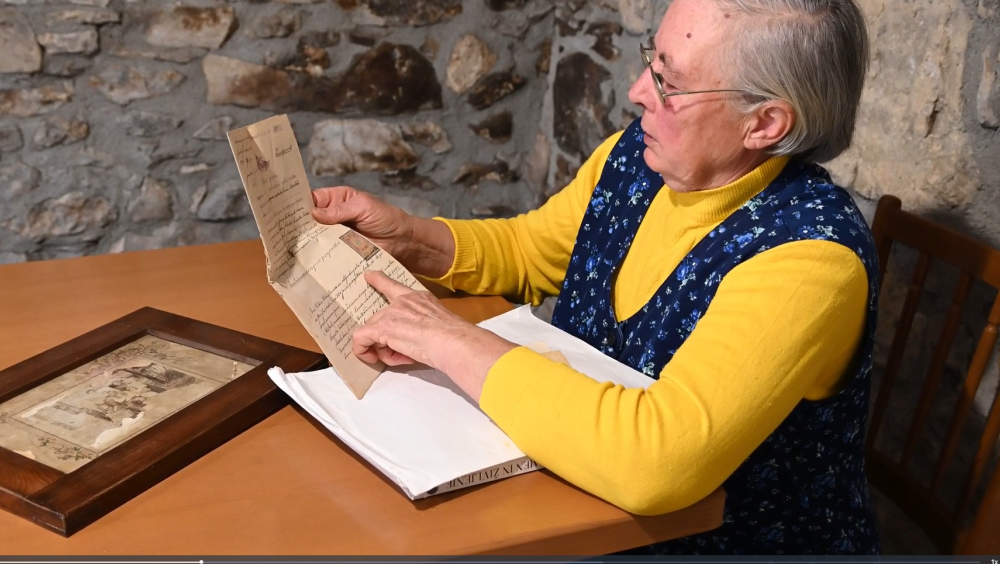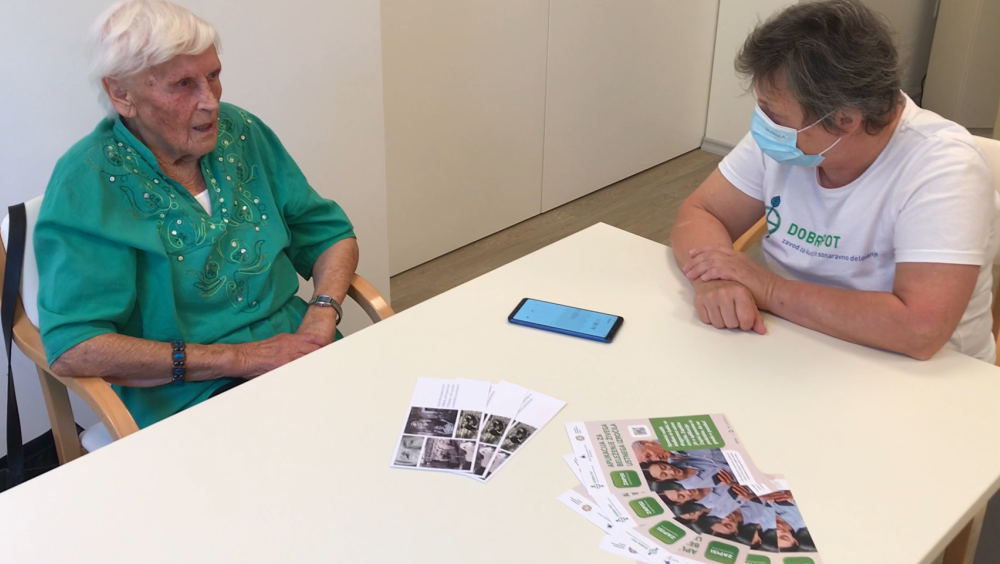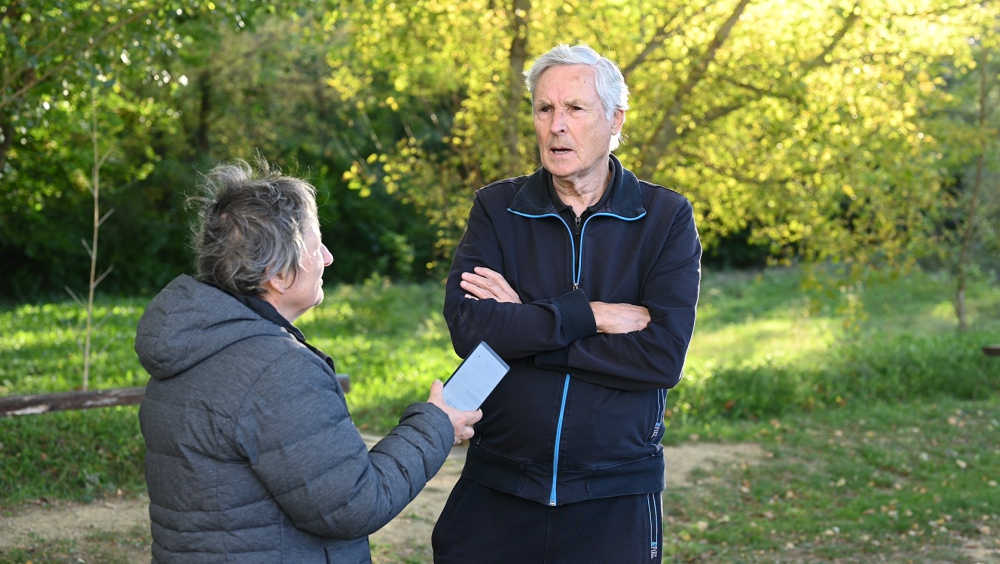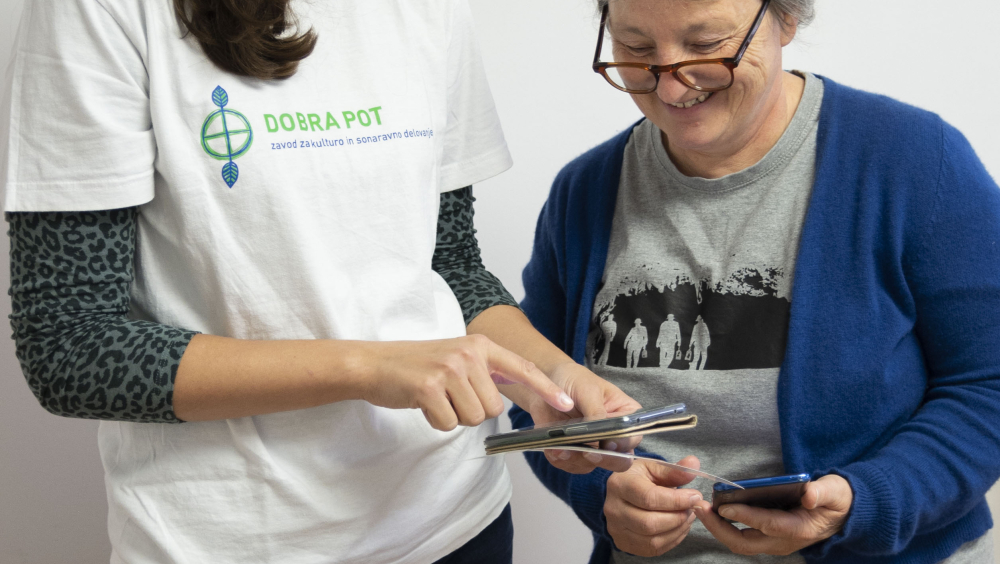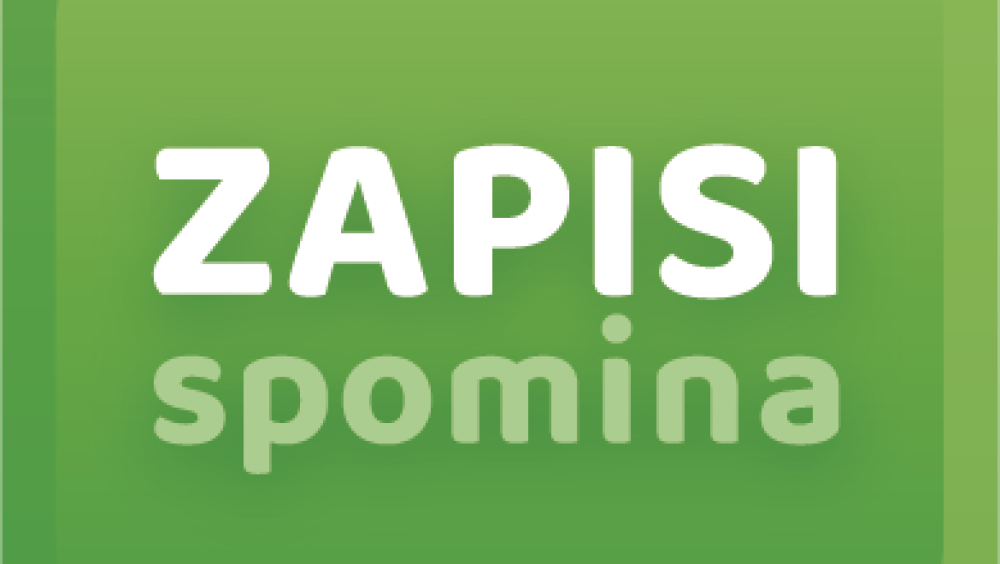Writings of Memory
Every person's life is a series of experiences and lessons learned. It is a tale in itself, a piece of lived history, serving as a puzzle in the joint tissue of humanity. Every life goes through turmoil and happiness, through thick and thin – sometimes, it is the smallest events that end up shaping us into people we become, building the core of our wisdom and strength.
What if you could scroll through the memories of your ancestors, of those who have trodden before you and read through their life experiences from the palm of your hand? What if you could hear true tales about how they’ve overcome the same difficulties you may be facing today and replay them again and again? How would that contribute to your life and to today’s society?
They say history repeats itself if we don’t learn from it. And they say battles won by our ancestors will be spared to us, but stories from the very mouth of people who’ve lived them, be it your or someone else’s ancestors, are a powerful tool for transferring values, wisdom and meaning to our everyday lives.
The Dobra pot Institute has created an online and mobile application for collecting and sharing life memories from our elderly.
The application is fully available online as a PWA (currently only in Slovene language) and in it, anyone can scroll through the published memories. Users can upload stories simply by registering into the app and then creating a new story/memory. The app (also project) is called “Zapisi spomina” (Writings of Memory) and was created in 2020 by Dobra pot Institute, with some help from the UNESCO’s Škocjan Caves Park and the Slovene Ethnographic Museum. It enables users to upload written, audio-recorded or video-recorded stories with pictures. The content is managed by the Dobra pot Institute and the Institute is also the exclusive owner of the application.
The application also serves as a tool for overcoming the digital divide between generations, giving youngsters a new joy in engaging with heritage by hanging out with their grandparents, recording their memories or teaching them how to use the app. The aim of the project is thus also to strengthen the inclusion of elderly and to remind today’s society of the importance of listening to the elderly in terms of preserving the collective memory. They have witnessed history and have so many stories to tell – stories that are our foundations.
European Union are its people, its citizens and almost every elderly person can tell part of the story of how Europe has become what it is today. The EU itself as a peace project is our heritage, a project, established by our grandfathers with the aim to enable future generations to live in peace. Thus, we believe the collection of memories can serve as a powerful tool for raising awareness of the values conveyed by heritage and for shaping our mentality in building the future.
Every person's life is a series of experiences and lessons learned. It is a tale in itself, a piece of lived history, serving as a puzzle in the joint tissue of humanity. Every life goes through turmoil and happiness, through thick and thin – sometimes, it is the smallest events that end up shaping us into people we become, building the core of our wisdom and strength.
What if you could scroll through the memories of your ancestors, of those who have trodden before you and read through their life experiences from the palm of your hand? What if you could hear true tales about how they’ve overcome the same difficulties you may be facing today and replay them again and again? How would that contribute to your life and to today’s society?
They say history repeats itself if we don’t learn from it. And they say battles won by our ancestors will be spared to us, but stories from the very mouth of people who’ve lived them, be it your or someone else’s ancestors, are a powerful tool for transferring values, wisdom and meaning to our everyday lives.
The Dobra pot Institute has created an online and mobile application for collecting and sharing life memories from our elderly.
Why? Because sometimes, we need to hear how children had to wake up at 3 am to bring cattle to graze before school, in order to realize where we come from and how privileged we are now. Sometimes, we need to hear first-hand about fathers not coming back from war to remind ourselves of how crucial it is to prevent wars and what a privilege it is to live in peace. Sometimes, we need to hear our grandfathers speak about how they have escaped war camps, in order to find strength and remind ourselves we can be brave too. Because sometimes, stories lived by our grandmothers can bring sense to our day and shed light on our shared human experience.
The application is fully available online as a PWA (currently only in Slovene language) and in it, anyone can scroll through the published memories. Users can upload stories simply by registering into the app and then creating a new story/memory. The app (also project) is called “Zapisi spomina” (Writings of Memory) and was created in 2020 by Dobra pot Institute, with some help from the UNESCO’s Škocjan Caves Park and the Slovene Ethnographic Museum. It enables users to upload written, audio-recorded or video-recorded stories with pictures. The content is managed by the Dobra pot Institute and the Institute is also the exclusive owner of the application.
Each story in the app is allocated to one of the six categories of intangible heritage as defined by the Slovene Rules on the Registry of Types of Heritage and Protection Guidelines (OJ RS Nr. 102/10) and into one of the 11 statistical regions of Slovenia, which allows for their geographical placement.
The app allows various ways of filtering content and searching through it, and includes guidelines on 1) how to implement interviews with the elderly and 2) how to use it as a learning tool in schools. It can also serve as a source of information for ethnologists, researchers, historians etc.
The application also serves as a tool for overcoming the digital divide between generations, giving youngsters a new joy in engaging with heritage by hanging out with their grandparents, recording their memories or teaching them how to use the app. The aim of the project is thus also to strengthen the inclusion of elderly and to remind today’s society of the importance of listening to the elderly in terms of preserving the collective memory. They have witnessed history and have so many stories to tell – stories that are our foundations.
Another aim of the project is of course to preserve their memories by way of digitalisation, making them accessible to a larger audience, and fostering active participation of communities (schools, families, organisations etc.) in engaging with heritage. The project wants to make people and communities realise that everyone’s story matters, every tale by our grandmothers or grandfathers about even the most ordinary events of the day is living oral heritage and should be regarded as priceless.
The application is an innovative tool for connecting two seemingly very different worlds - the old one and the new digital one – while opening a wide variety of possibilities for its use in schools, youth workshops, digital workshops for elderly, storytelling events, in the framework of student practice and much more. It was developed with the aim of giving heritage a new place in our lives in this digital era and its creators believe that its use can, in a subtle way, strengthen the transfer of values to young generations as well as their sense of identity and connection to their roots.
The project is one-of a-kind and has a high potential of being transferred to other countries. Activities in this direction are already in place and the recognition by EHD would make the transition to a European level smoother.
We want the stories of our grandfathers to spread across Europe and remind us of the value of their lives and the heritage they represent. In this way, through people sharing their personal memories in the app, the whole history of Europe can be revived through individual stories, serving as pieces in a large mosaic of what we call today’s Europe.
Application is available at: https://zapisi-spomina.dobra-pot.si/
Dobra pot Institute, contact: info@dobra-pot.si, nava.vardjan@dobra-pot.si
Below, some excerpt from stories/memories, published by users of the app:
MUTO
He lived in a small room at a foster family, the first neighbours of the village church. The church and its surroundings were our playground. There, we played football, hide and seek and did a million other things that children do. Of course, he was there too. We were afraid of him. For no reason. He was always smiling in his quiet world, he was kind and modest. He spoke, or rather mumbled, in a strange language. As it happens, we, the village kids, liked to tease him, we could be rough sometimes.
When I grew up, I learned the truth about him. I don't understand why nobody told us at the time. He had survived a very serious illness at a very early age. He lived, but was deaf and mute. He was taken into the care of Italian nuns, who taught him a few words in Italian. That's why we did not understand him – he was always telling people that he was deaf (ital. "muto"), so the name Muto stuck with him. Later in life, he learned some Slovene. He liked to ask for cigarettes and was always thankful for the slightest favour.
I don't know why he remembered my face, but he always stopped me on the road, smiled and thanked me, when I asked him how he was. Looking at him, I felt embarrassed of our childish behaviour. He died in the care home, but I still have a picture of him, smiling by the wall opposite the church, holding his trembling hands and looking at us as if he too wanted to play. I am sad that we did not know how to smile back at him. (Excerpt from a memory by Rihard Baša, published in the app)
CHRISTMAS IN THE PAST
Sixty years ago, December celebrations and the decorations were much more modest than today. God forbid a spruce tree was brought in from the forest, they were scarce, so we were only allowed to look at them. After the Second World War, they were replanting of spruce trees in our region, but not very successfully. So, we had to go out to find a juniper or a pine tree.
We put candy on the tree, if we could get it, but candys were scarce too. Sometimes, my parents would tie tangerines or nuts on the tree. We, the children, made ornaments from little pieces of paper and sprayed them to make them shinier. We made ribbons and such, everything was done at home. Under the tree, there was the obligatory moss and a modest nativity scene.
For presents we got some tangerines, oranges, walnuts, maybe some sweets. We celebrated at school too, and I remember the sweets, oranges and apples we got, also some prunes, pears, dried apples. At that time we, didn't have long Christmas holidays as children have today, we had only one day free for the New Year and then back to school. (Excerpt from a memory by Vlado Zadnik, published in the app)
FERDO AND HIS NOVELTIES
This is a story about a painter, who lived and worked in the vicinity of the Grumlof Manor. He is known as an excellent painter who trained with the greatest of masters. But this narrative is not about his artistic successes, it is about things from his everyday life, encounters with local people. Everyone who remembers him, says the same thing: he had an unusual, idiosyncratic, tempestuous and fiery character; sometimes he shouted at people and scolded them, sometimes he was all nice and helpful, and there were times when he didn't speak a word for several days. But people knew him, they accepted him and respected him
He was unutterably enthusiastic about every novelty he got to know, he just had to have it. This amused his fellow citizens and the children in the neighbourhood. One day in the years between the two wars, probably in 1923, he roared into the village on a big motorbike. No one had ever seen such a vehicle, no one had ever heard such a loud rumble and nothing had ever raised so much dust. People rushed to see what the master had done again, they stared at the engine and the painter in his leather cap and funny glasses. Of course, he was thrilled to be the centre of attention. /…/ (Excerpt from a memory by Antonija Novak, published in the app)
We believe the application is a one-of a-kind product, serving as a link between the past and the present, the analogue, and the digital world, making heritage more accessible and attractive to young generations. The application is currently operating in Slovenia, but a set of steps has been established aiming to enable the use of this tool on a European level. The core activity needed for a successful continuation and transfer is large-scale promotion across Europe.
How would the project contribute to the European Dimension?
The tool fosters a wide engagement with heritage and is interesting for various target groups. Anyone can contribute with a story/memory and anyone can read/listen/watch the tales from the collective memory, which means the whole history of Europe can be revived in an innovative way by people telling personal stories, which are ultimately pieces in a large mosaic of what we call today’s Europe.
European Union are its people, its citizens and the lives they have lived. Every life, every family is directly connected to a part of our collective history and every family can tell part of the story of how Europe has become what it is today.
European values, principles and foundations were formed by our history, our heritage, the core of which were surely the events around the WWII. The EU itself as a peace project is our heritage, a project, established by our grandfathers with the aim to enable future generations to live in peace. Thus, we believe every grandfather has an important story to tell and the collection of memories can serve as a powerful tool for raising awareness of the values conveyed by heritage.
Reading about the European history in a book or watching a documentary is one thing but hearing the very personal experiences of its witnesses - those, who have lived through history, is something totally different.
In view of the Council’s European Cultural Heritage Strategy for the 21st century, the project is in line with the following recommendations: 1) preserving the collective memory, 2) promoting an inclusive approach to heritage, 3) encouraging the involvement of citizens in capitalising on their everyday heritage 4) making heritage more accessible and 5) building a more inclusive and cohesive society. In terms of the social component, it is also an 6) innovative way of presenting cultural heritage to the public and 7) supporting intergenerational activities to do with heritage.
The stories being collected in the application have a strong educational potential. Zavod Dobra pot is already using the application as a tool to
We believe the application is a one-of a-kind product, serving as a link between the past and the present, the analogue, and the digital world, making heritage more accessible and attractive to young generations. The application is currently operating in Slovenia, but a set of steps has been established aiming to enable the use of this tool on a European level. The core activity needed for a successful continuation and transfer is large-scale promotion across Europe.
How would the project contribute to the European Dimension?
The tool fosters a wide engagement with heritage and is interesting for various target groups. Anyone can contribute with a story/memory and anyone can read/listen/watch the tales from the collective memory, which means the whole history of Europe can be revived in an innovative way by people telling personal stories, which are ultimately pieces in a large mosaic of what we call today’s Europe.
European Union are its people, its citizens and the lives they have lived. Every life, every family is directly connected to a part of our collective history and every family can tell part of the story of how Europe has become what it is today.
European values, principles and foundations were formed by our history, our heritage, the core of which were surely the events around the WWII. The EU itself as a peace project is our heritage, a project, established by our grandfathers with the aim to enable future generations to live in peace. Thus, we believe every grandfather has an important story to tell and the collection of memories can serve as a powerful tool for raising awareness of the values conveyed by heritage.
Reading about the European history in a book or watching a documentary is one thing but hearing the very personal experiences of its witnesses - those, who have lived through history, is something totally different.
In view of the Council’s European Cultural Heritage Strategy for the 21st century, the project is in line with the following recommendations: 1) preserving the collective memory, 2) promoting an inclusive approach to heritage, 3) encouraging the involvement of citizens in capitalising on their everyday heritage 4) making heritage more accessible and 5) building a more inclusive and cohesive society. In terms of the social component, it is also an 6) innovative way of presenting cultural heritage to the public and 7) supporting intergenerational activities to do with heritage.
The stories, being collected in the application, have a strong educational potential. Zavod Dobra pot is already using the application as a tool to 1) incorporate heritage education in school curricula, 2) encouraging young people in local schools to become interested in heritage and 3) develop and promote intergenerational transfer of values.
Project legacy
Budget Breakdown
